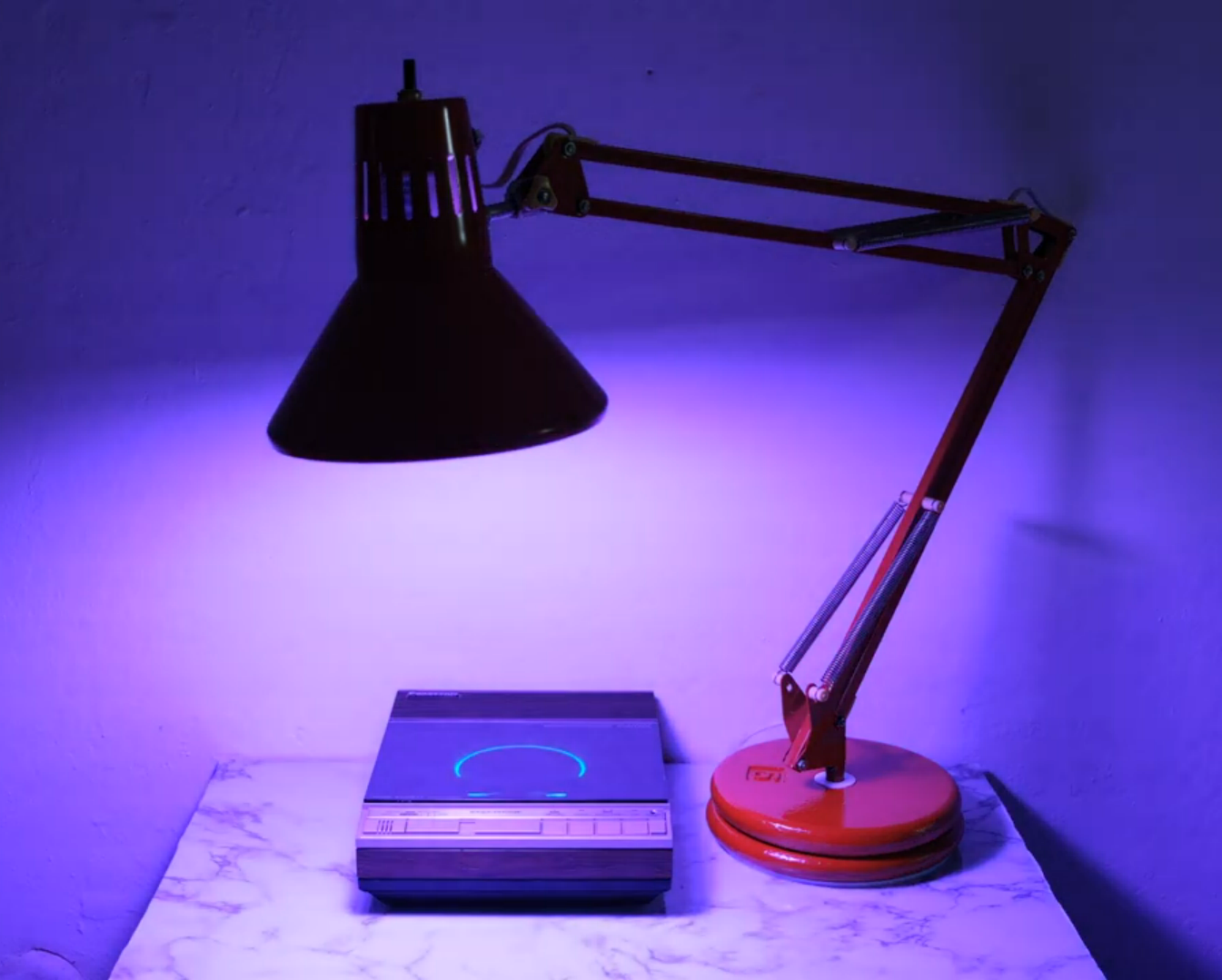#panasonic
1999-11-02: Panasonic PR 3000, spät abends
Ein 1995 erworbenes Rennrad, das ich 15 Jahre lang und gerne gefahren habe, bis heute besitze und halbwegs fahrfertig halte, obwohl es ziemlich ausgemergelt ist. Eines von zwei Fahrrädern, mit denen ich vor 25 Jahren an jedem einzelnen Arbeitstag meine 2 x 12 Kilometer zur Arbeit hoch auf einen örtlichen Hügel abgespult habe, im Sommer wie im Winter. Ich rede mir ein, dass es immer noch als Besucher- oder Bahnhofsrad tauglich ist, aber alle Besucher, die dafür infrage kamen, hatten eigene Räder oder Alternativen, z.B. die hierzustadt verfügbaren NextBikes. Wenn ich ehrlich bin, es ist reine #Nostalgie.
Die mit zwei Akkus betriebene Lampe am Lenker war ein Unikum insofern, als sie eines der wenigen zugelassenen Exemplare war, das weder mit 6 V betrieben wurde, noch die üblichen 2,4 W Leistung verheizte. Hell genug war sie, um als Frontscheinwerfer für Sichtbarkeit zu sorgen und sogar gut genug, um bei verhaltenem Tempo die Fahrbahn auszuleuchten. Ich bin damals oft erst spät abends bei Dunkelheit von der Arbeit weggekommen ...
Nostalgie ist auch die Kamera, mit der das Foto aufgenommen wurde: eine in diesem Jahr neu erworbene Digitalkamera, mit der auch das in diesem Artikel gezeigte Foto von der Bonner Kennedybrücke fotografiert wurde, eine Fuji DX-10 . Das Foto ist orginal so, wie damals von der SmartMedia-Karte herunterkopiert.
#fahrrad #rennrad #panasonic #pr3000 #anno1999 #mdrza #muskelmotor
2 Likes
4 Comments
Ich liebe ja meine GH-3 immer noch nach all den Jahren. Für Fotos ist sie okay, für Filme toll. Aber was mich wirklich echt annervt, ist, dass die zwar einige Programme hat, aber nichts, was ich wirklich gebrauchen kann. Ich erinnere mich aber an eine Casio Exilim, die so etwas hatte, wie ich brauche, nämlich die "Fly-in"- und "Fly-out"-Modi. Damit konnte man Vögel aufnehmen, die entweder in den Bildbereich hineinfliegen ODER die hinaus fliegen. Fantastisch!
"...Fly-in and fly-out auto modes, which capture still shots at 60fps when the subject enter or exit the frame..."
Nur leider hat meine Kamera nicht mal eine dämliche Bewegungserkennung, um überhaupt Aufnahmen automatisch zu machen. :(
Es wird wohl mal wieder Zeit für eine neue Kamera. Aber da ist die Qual der Wahl wieder groß. Vollformat oder doch MFT? DSLR oder halbdurchlässiger Spiegel, wie bei der Sony Alpha? Nikon oder Canon oder [beliebigen Hersteller einfügen]? Für Nikon habe ich ein tolles Makro. Geht mit Adapter auch an der Lumix GH-3, ist aber eigentlich Unsinn. Fragen über Fragen und ich kann mich so schlecht entscheiden. Und was das alles wieder kosten würde ...
One person like that
The State of Play In Solid State Batteries
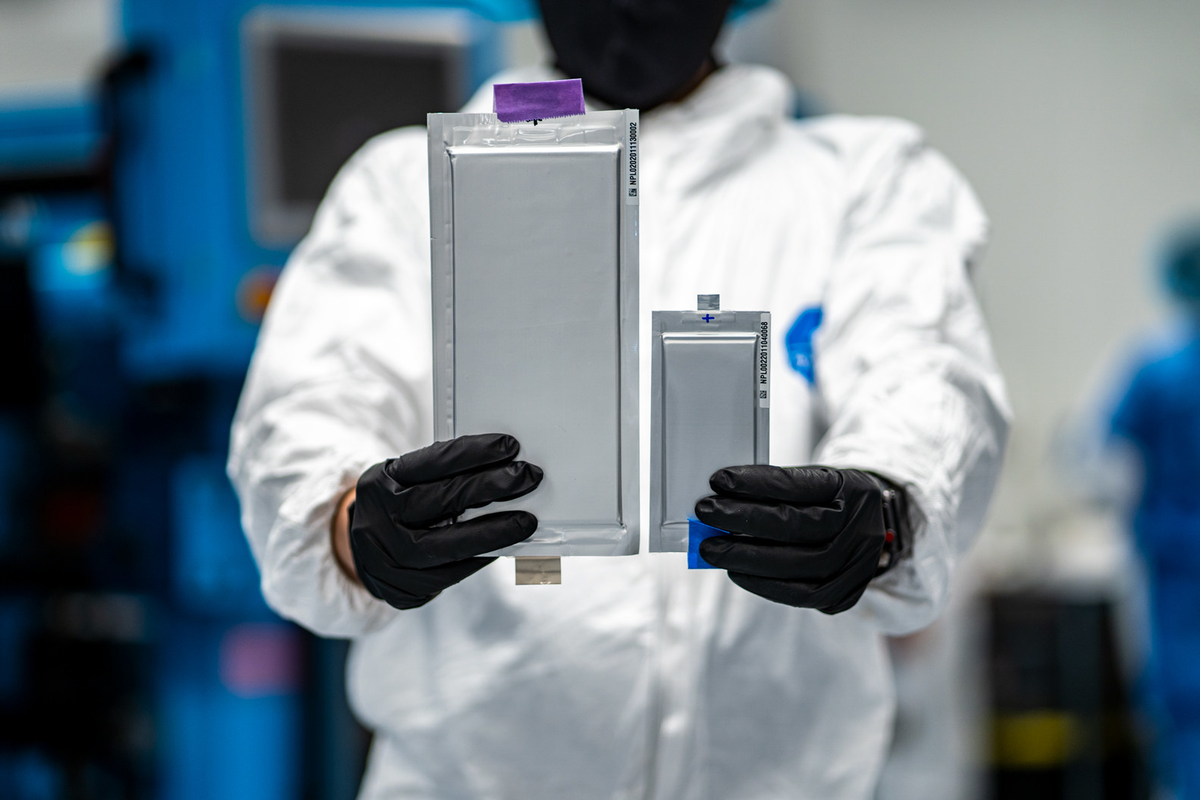

Electric vehicles are slowly but surely snatching market share from their combustion-engined forbearers. However, range and charging speed remain major sticking points for customers, and are a prime selling point for any modern EV. Battery technology is front and center when it comes to improving these numbers.
Solid-state batteries could mark a step-change in performance in these areas, and the race to get them to market is starting to heat up. Let's take a look at the current state of play.
Why Go Solid State?
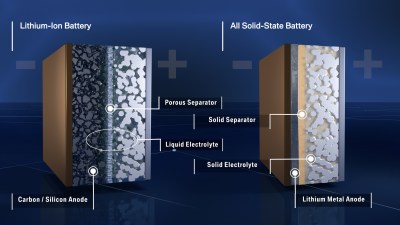 The hope is that solid-state batteries could pack in higher energy densities by making it practical to use a lithium metal anode design. Credit: BMW, press site
The hope is that solid-state batteries could pack in higher energy densities by making it practical to use a lithium metal anode design. Credit: BMW, press site
Currently, lithium-ion or lithium-polymer batteries are used in the vast majority of EVs. They have higher power density and lower weight than other practical, commercialized battery technologies, making them ideal for vehicle use. However, they also have some drawbacks. They're still heavier than we'd like for their given capacity, they take too long to recharge, and they have a nasty habit of catching on fire in a rather ferocious manner.
Solid-state batteries could change all this. They're called "solid state" because the liquid electrolyte is replaced with a solid-state material. Solid electrolytes would be far less flammable than liquid materials used presently, and thus far less sensitive to heat, too. This could allow for greater current draw as well as faster charging, as the battery would not have to be kept in as narrow a temperature range for safety reasons.
Additionally, the solid electrolyte may allow use of different anode materials that would provide greater energy density. In particular, scientists have long wished to use lithium metal directly as an anode material in batteries. However, in current liquid electrolyte batteries, the lithium metal anode forms dendrites that short out the battery, destroying it in the process. It's believed that a solid electrolyte would prevent this growth, and could provide up to two and a half times the energy density of existing lithium batteries.
Challenges
Solid-state battery technology has not matured to the point of mainstream use just yet. Some solid-state batteries have been arriving on the market, but they're several orders of magnitude too small for use in electric vehicles.
Challenges remain around conductivity, particularly at lower temperatures, as well as issues of high resistance between the solid materials that make up the cathode, anode, and solid electrolyte. Many solid state battery designs require the solid electrolyte to be under great pressure to maintain good conductivity, which introduces mechanical issues around stress and fragility.
Additionally, there simply isn't any infrastructure to produce solid-state batteries en masse. Automotive manufacturers have been rushing to build new battery plants to support EV manufacturing. However, the vast majority are to make up a perceived shortfall in producing current battery designs. It's likely plants would have to be significantly retooled to produce solid-state batteries, which have very different internal designs.
Contenders
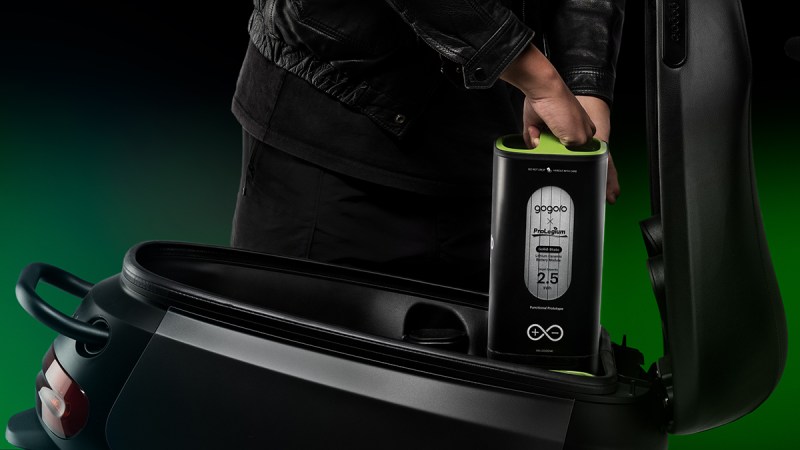 Electric scooter manufacturer Gogoro unveiled a prototype solid-state battery earlier this year. The "lithium ceramic battery module" came with a 40% boost in capacity over the company's existing cells. Credit: Gogoro, press site
Electric scooter manufacturer Gogoro unveiled a prototype solid-state battery earlier this year. The "lithium ceramic battery module" came with a 40% boost in capacity over the company's existing cells. Credit: Gogoro, press site
Regardless, the tipping point at which solid-state batteries become viable commercially is nearly upon us. Several companies are investing big money in this space. Each hopes to be the first to get a competitive advantage over its rivals by having the best battery tech available.
On the small scale, we already saw last year that component manufacturer Murata had developed 25 mAh solid-state batteries last year. These are awesome to mount on a PCB, but won't really help you drive anywhere. Stepping up a little, but still on the smaller scale, is the effort from Hitachi Zosen. The company has produced a high-performance solid-state battery of 1000 mAh capacity, however, the technology is not yet commercialized.
Electric scooter company Gogoro has cornered the Taiwanese market in electric mopeds. Their vehicles feature a handy swappable battery system, with battery-swap stations dotted around the country to keep riders on the move. Now, the company has unveiled a new solid-state battery prototype, compatible with their existing battery form factor. This means the new battery can drop into all their existing vehicles on the road. The new battery ups capacity to 2.5 kWh, up from 1.7 kWh. It's a full 40% increase in energy density, boosting the range of any vehicle that can run on a Gogoro battery pack. However, the pack remains a demo article at this stage, and the company hasn't announced definite plans to roll the batteries out to their network just yet.
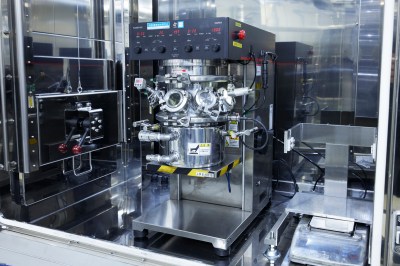 Nissan recently unveiled a prototype production facility for solid-state batteries. Credit: Nissan, press site
Nissan recently unveiled a prototype production facility for solid-state batteries. Credit: Nissan, press site
Meanwhile, titans of the automotive industry are also vying for the lead in this area. Last year, BMW made it clear it would show a solid-state powered tech demonstrator by 2025, while it hopes to go into production closer to 2030.
Nissan has gone further, revealing a prototype factory for solid-state batteries in partnership with NASA. The Japanese automaker claims that its solid-state cars could be charged up to three times faster than current models, while offering twice as much range. The company hopes to have a pilot production line running by 2024, in preparation to sell solid-state EVs to the public in 2028. The company also noted that solid-sate tech would produce a pack "about half the size of the current battery" and that it could "fully charge in 15 minutes instead of a few hours."
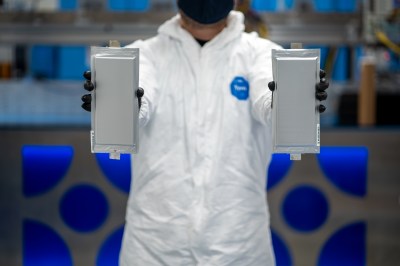 BMW has managed to produce prototype solid-state batteries up to 20 Ah capacity in partnership with Solid Power. The plan is to test 100 Ah batteries in 2022. Credit BMW, press site
BMW has managed to produce prototype solid-state batteries up to 20 Ah capacity in partnership with Solid Power. The plan is to test 100 Ah batteries in 2022. Credit BMW, press site
Toyota has also invested big, and is working hard with Panasonic to be at the head of the pack. The company claimed earlier this year that it would have a hybrid vehicle on sale with solid-state batteries as soon as 2025. Given the high cost of developing and producing the new batteries, this counterintuitive move makes some sense. Hybrid cars use smaller batteries than EVs, and thus the solid-state tech won't inflate the price of a hybrid as much, keeping it market-suitable.
When it comes to the automotive market, though, solid-state batteries are fundamentally too important a technology to ignore. Everyone from Volkswagen to Rivian is taking a look, though most of the other players aren't showing their hands just yet.
Overall, solid-state battery technology promises to be a gamechanger. All that's required is for scientists and engineers to solve a few issues around reliability, manufacturability, and cost. If those hurdles can be overcome, the new batteries should blow lithium cells out of the water, and quickly take the market by storm.
Banner image: Solid Power's production 20 Ah battery versus 2 Ah first version.
#carhacks #chemistryhacks #currentevents #featured #interest #battery #electricvehicle #ev #murata #nissan #panasonic #solidstate #solidstatebattery #tesla #toyota
1 Shares
Panasonic is the latest Japanese company to break with Japan's workaholic culture and offer a 4-day workweek
The electronics conglomerate Panasonic is the latest major Japanese company to announce a four-day workweek to interested employees, Nikkei reported.
"We must support the well-being of our employees," Panasonic CEO Yuki Kusumi told investors at a recent briefing, according to the outlet.
Known for its intense work culture, corporate life in Japan can be so unforgiving that dying from overworking is not unheard of.
In a bid to improve the country's work-life balance, the Japanese government last June recommended that companies allow staff members to opt for a four-day workweek, the German broadcaster DW reported.
More in this link -> https://www.businessinsider.com/workaholic-japan-companies-introduce-four-day-workweek-panasonic-2022-1
#4dayweek #job #work #panasonic #japan
8 Likes
1 Shares
Motorola, Apple, Samsung, and now even Fairphone 4: NO 3.5mm headphone jack!!!
For the audio junkies among us, this is a no go. Was so looking forward to the Fairphone, but will probably use a phone with audio jack as “offline” music phone, one phone as “camera” phone (also offline) and one phone as actual phone, maybe the PinePhone X-D (#madness))
- Are Airpods is it “cool”? (no, imho they look ridiculous on interviews, like strange ear rings)
- “does it make sense” (not if the user likes to listen to music longer than 3h a day and hates to buy additional adapters and charging a multitude of devices, just to do what smartphones are famous for: make calls, take pictures and listen to music, while texting, browsing or mailing
If maximizing profits makes sense, then yes: “the real reason is to sell you more stuff”
Reading through some of Amazon ratings from non-fanatic users (some Apple fans will just buy whatever Apple throws at them) what the user gets for 200 bucks are wireless headphones with tiny tiny batteries that die after 2-3 years and can not be replaced easily.
Really?
That is a future corrupt corporations want, but surely not what users want.
Made the same experience years ago with the also high quality ORIGEM Bluetooth earphones-headsets
They are nice wireless headphones, BUTTTTTTT… the weak design point of ALL WIRELESS HEADPHONES are (of course) the batteries.
So if Apple wanted to be truly revolutionary innovative, they would have to come up with a new type of battery, that lasts forever.
But they did not.
Other headphones such as the excellent Panasonic RP-HJE125 of course, can die as well from heavy usage, but they do not need batteries and cost a fraction (20x times less).
(the author of this article is in no way affiliated or sponsored by Panasonic)
In the case of the ORIGEM: After testing them for several months (yes it also looks ridiculous wearing them, with “stuff” sticking out of the ears) simply got tired of always having to charge an extra device, just to listen to music for a few hours.
So in the case of the Samsung’s headphone-jack-less 1000 bucks phone the “S21Ultra” instead of SIMPLY plugging in a simple earphone (a plug, a wire and the speakers) into a simple earphone jack,
the user will have to buy “an external usb attached soundcard” (DAC adapter).
But those USB DAC adapters are unpracticable (some have headset (microphone) capability and if the user uses headphones, no sound is recorded during video recording… unless the DAC audio adapter is unplugged… so the user needs to remember everytime, before taking a video, to unplug the DAC adapter which SUCKS!!! (will result in a lot of videos without audio X-D)
Also: imho a complete waste of resources: the user pays for two sound chips (one in the smart phone (but never used) and one external)
Unless Apple & Co come up with really really good batteries that last 10h a day for months without recharge: it absolutely make no sense at all from a usability standpoint.
Of course it makes sense from the reckless profiteering standpoint of a company, but not from a customer or environment standpoint.
Since Jobs: Apple is lacking innovation
It appears that just producing the same product over and over again (with minor improofments) without any significant revolutionary innovation or technical improovment (such as a magic new material allows magic batteries that power devices endlessly and last a lifetime) is not very innovative. (this is true for cars just as for Apple devices).
Wohoo Apple got a new engine: the M1-CPU, nice, but since Chief innovator Steve Jobs died, Apple is not Apple anymore.
Lack of innovation will definately be the end of the world’s (currently) most valuable company, with a peak that is (probably) already reached and a steady decline from there.
Apple devices used to be famous for:
- “it just works”
- “Apple seems to have forgotten about the whole ‘it just works’ thing”
- to make it work, would actually mean: simplify, simplify, simplify: less products and less product versions, and at least 10 years of firmware/software support (anything else is just a crime to the environment)
- dedication to simplicity & usability (also subsums to “it just works”)
- high quality software (not anymore? Apple imho has become lazy at software quality and created so many different products in a short time, more products means more complexity means: more effort when it comes to firmware-software support, so Apple just decided (just as some other smart phone vendors) to not care about long term usability and long term support or updates)
Instead of “it just works” and innovation, Apple has become known for:
- screen quality (retina displays are used by Docs to look at x rays, but possible with programs running in windows (!))
- good camers (no doubt, theIPhones have that)
If that is all the user needs, go ahead.
The M1-CPU just means: Apple still got excellent CPU and hardware engineers (clap, clap, applause) the first RISC chip that outperforms many of Intel’s latest x86 CPUS (the Intel empire fought back with the i9, but x86 consumes WAY more power in the process)) but it is not a Steve-Jobs-kind-of revolutionary innovation.
https://dwaves.de/2021/06/07/apple-wants-to-become-the-new-google-bigbadboldbigdatamothership/
Corona shows: patents suck and kill people (part of the problem)
[video width=”282″ height=”344″ mp4=”https://dwaves.de/wp-content/uploads/2021/12/Why-the-Omicron-Variant-got-so-bad-The-House-is-On-Corona-Fire-Vaccine-patents-kill-and-make-the-pandemic-worse-Fiji-water.mp4″\]\[/video\]
Did u know that Steve Jobs actually tried to patent “pinch to zoom” but not (!?) two-finger scroll?
(src: selectpatents.com)
Actually making the case for: screw patents, they are what makes the Corona pandemic that worse (now effectively killing people by US gov not enforcing Pfizer & Biontech to make the COVID19 vaccine “Open Source” or “Public Domain” aka open knowledge, as Tesla does)
Elon Musk famously announced in an open letter in June of 2014 that Tesla would “not initiate patent lawsuits against anyone who, in good faith, wants to use our technology.”(src: startupnation.com)
But not all of Steve’s ideas were pure gold, such as the Apple-stuborn one-button-mouse (same as the Atari track pad) it lost the evolution race and the 10 bucks two button mouse with scroll wheel won.
(“Indeed, the mouse is largely considered one of the worst Apple product flops of all-time”)
So it is no suprise that the IPhone 13 does not sell that well: That could mean customers are … “skipping the iPhone 13 altogether and waiting to upgrade next year, when its successor comes out” (src)
One’s forecast is: the IPhone 14 won’t sell that much either, face it, the IPhone hype is over, everyone that want’s an IPhone, has already one.
Right 2 Repair: Apple and Microsoft, suddenly repair friendly?
“iFixit: Microsoft Surface Pro receives worst tablet repairability score” (src: zdnet.com)
Shareholder activists forced them to!
(AMAZING WORK! KEEP IT UP! SUPPORT EM! 🙂 👍🏻😎✌🏻
Plus a “new sheriff in town at the Federal Trade Commission (FTC), Lina Khan, backed by a Biden executive order, adopted a get tough on right to repair issues(see FTC Votes 5-0 to Crack Down on Companies For Thwarting Right to Repair).” (src: justicenewsflash.com)
Nice video explaining how it works:
https://www.greencentury.com/wp-content/uploads/2020/03/TheLever\_InvestmentNews-compressed.mp4
e-Recycling Guru goes to Jail over Windows restore discs court ruling
if that does not make the case for Open Source (aka GNU Linux) and Free Software – then what does?
“The appeals court upheld a federal district judge’s ruling that the disks made by Eric Lundgren to restore Microsoft operating systems had a value of $25 apiece, even though they could be downloaded free and could be used only on computers with a valid Microsoft license.
The U.S. Court of Appeals for the 11th Circuit initially granted Lundgren an emergency stay of his prison sentence, shortly before he was to surrender, but then affirmed his original 15-month sentence and $50,000 fine without hearing oral argument in a ruling issued April 11.” (src: washingtonpost.com)
“US Public Interest Research Group defended Lundgren, issuing a statement over his sentencing through its Right to Repair campaign.[33]
Lundgren was released after serving one year of his fifteen-month sentence for good behavior.[1]“ (src: wiki)
Eric, just dtich Windows altogether and ship with GNU-Linux 🙂 (try Debian11 (non-free, for maximum hardware compatibility) the “universal (runs anywhere) OS” works on a lot of old hardware very very well and most of the time way faster and more efficient than Windows. Just GIVE IT A TRY WILL YA?
#linux #gnu #gnulinux #opensource #administration #sysops #repair #headphones #music #apple #microsoft #samsung #motorola #fairphone #panasonic #origem #headset #airpod #madness #audio #corona #patent #patents
Originally posted at: https://dwaves.de/2021/12/09/smart-phones-without-headphone-3-5mm-jack-why-this-sucks-and-wireless-headphones-with-tiny-batteries-make-no-sense-in-general-apples-lack-of-innovation-the-microsoft-recycling-catastrophe/
One person like that
One person like that
#photographie #photographie #Noir_et_blanc #NB #black_and_white #BW
Brise-lames de la plage du Sillon à #Saint-Malo
Pour les geeks: #Panasonic #GX8 et #DxO #Filmpack - simulation de film Ilford Delta 100 si ma mémoire est bonne.
Nous avons eu la chance de voir une éclipse totale de lune hier soir.
Voici le résultat en photo, avec les moyens du bord !
Technique : Panasonic GH5 + Vario 45-200mm f/4.0-5.6 II
#photo #lunareclipse #moon #lune #eclipse #vanuatu #portvila #creativecommons #libre #free #panasonic #GH5
One person like that
One person like that

Obviously glass doors are misconceptions from #Cats point of view.
Obviously glass doors are great inventions from the point of view of a #Blackbird.
3 Likes
One person like that










